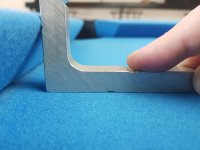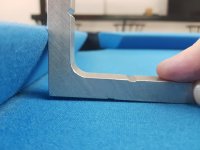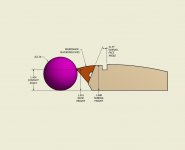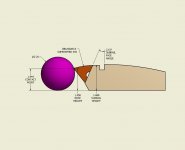In a pool hall that I play league in lives a 3 month old Diamond Pro-Am.
For me it has never played quite right, just kind of hard work but to be honest I rarely play on Diamond's so I just presumed it was meant to play like that.
However, I had reason to buy a rail height checking widget from the pooltablefeltcloth website so I tried it on the Diamond to see if the cushions could be causing the issue.
Below are pictures of the widget laid flat against the bed cloth, and then pushed lightly against the nose of the cushion to hold it in place when the nose fits snugly into the "optimum height" groove.
As you can see there is about 3mm gap under it, roughly the same as the size of the gap between the bed cloth and the botton of the rail.
Is this the normal set up for Diamond Pro-Am's? Cloth is Simonis 760 in case that matters.
Thanks in advance.


For me it has never played quite right, just kind of hard work but to be honest I rarely play on Diamond's so I just presumed it was meant to play like that.
However, I had reason to buy a rail height checking widget from the pooltablefeltcloth website so I tried it on the Diamond to see if the cushions could be causing the issue.
Below are pictures of the widget laid flat against the bed cloth, and then pushed lightly against the nose of the cushion to hold it in place when the nose fits snugly into the "optimum height" groove.
As you can see there is about 3mm gap under it, roughly the same as the size of the gap between the bed cloth and the botton of the rail.
Is this the normal set up for Diamond Pro-Am's? Cloth is Simonis 760 in case that matters.
Thanks in advance.




